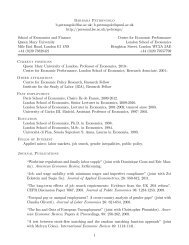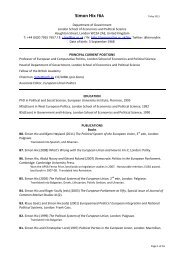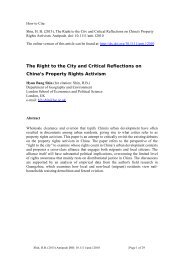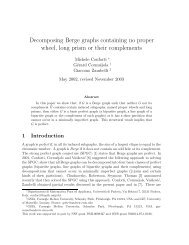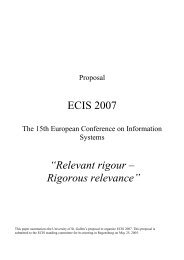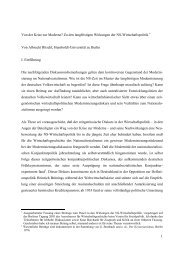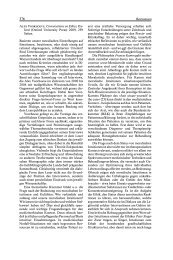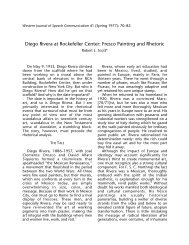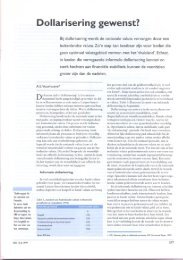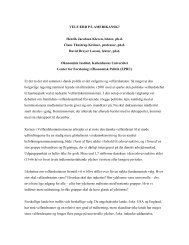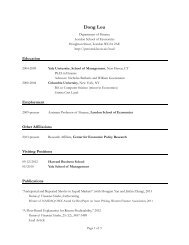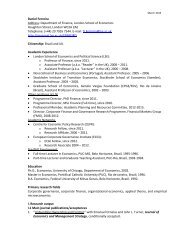Reference: MA, Debin. “The Great Silk Exchange: How the World ...
Reference: MA, Debin. “The Great Silk Exchange: How the World ...
Reference: MA, Debin. “The Great Silk Exchange: How the World ...
Create successful ePaper yourself
Turn your PDF publications into a flip-book with our unique Google optimized e-Paper software.
<strong>the</strong> China connection. Both Dieter Kuhn and Claudier Zanier, in <strong>the</strong>ir comparative studies<br />
of pre-modern technology, unequivocally noted that <strong>the</strong> key elements of <strong>the</strong> early European<br />
silk-reeling and throwing equipment could find <strong>the</strong>ir origin in earlier Chinese versions<br />
(Needham 1988: 418-33; Zanier 1994). Chinese sericulture and silk production had reached<br />
a peak in terms of both quality and productivity in <strong>the</strong> Song dynasty, immediately before <strong>the</strong><br />
Mongol rule in China (Needham 1988: 384-90; Fan and Jin 1993: Ch. 4). The opening-up<br />
of <strong>the</strong> Eurasian continent by <strong>the</strong> Mongols marked <strong>the</strong> high stage of East-West exchange as<br />
symbolized by <strong>the</strong> famous travels of Marco Polo.<br />
<strong>Silk</strong> Road: <strong>the</strong> sea route<br />
Early maritime trade<br />
The sea route, sometimes considered <strong>the</strong> second <strong>Silk</strong> Road, linked <strong>the</strong> South China Sea to<br />
<strong>the</strong> Indian Ocean, and through ei<strong>the</strong>r <strong>the</strong> Persian Gulf or <strong>the</strong> Red Sea, connected to <strong>the</strong><br />
Mediterranean. It brought out Chinese silk almost as early as <strong>the</strong> land route. In <strong>the</strong> early<br />
days, primitive ships and navigational tools and lack of geographical knowledge enabled<br />
<strong>the</strong> seafarers to cover only short distances, staying close to <strong>the</strong> shore lines. Paralleling <strong>the</strong><br />
overland route, <strong>the</strong> sea route served as an effective alternative (Needham 1954: 176-80).<br />
The rise of Islam played a crucial role in <strong>the</strong> development of <strong>the</strong> sea route as it did<br />
for <strong>the</strong> land route. During <strong>the</strong> eighth and ninth centuries <strong>the</strong> Islamic shipmasters penetrated<br />
into <strong>the</strong> Indian Ocean and Sou<strong>the</strong>ast Asia, China and even reached Korea and Japan<br />
(Needham 1954: 179; Hourani 1951: Ch. II). As illustrated earlier, pressure from Islamic<br />
and o<strong>the</strong>r forces on <strong>the</strong> Northwestern frontier had pushed China’s external trade<br />
10



